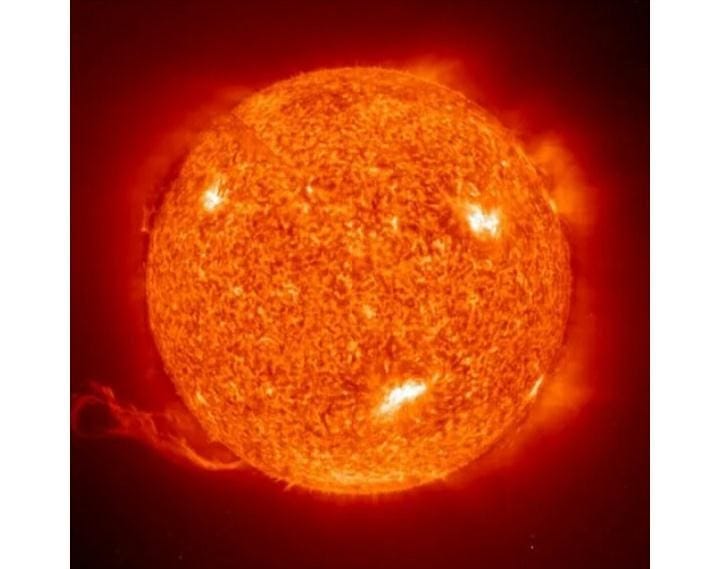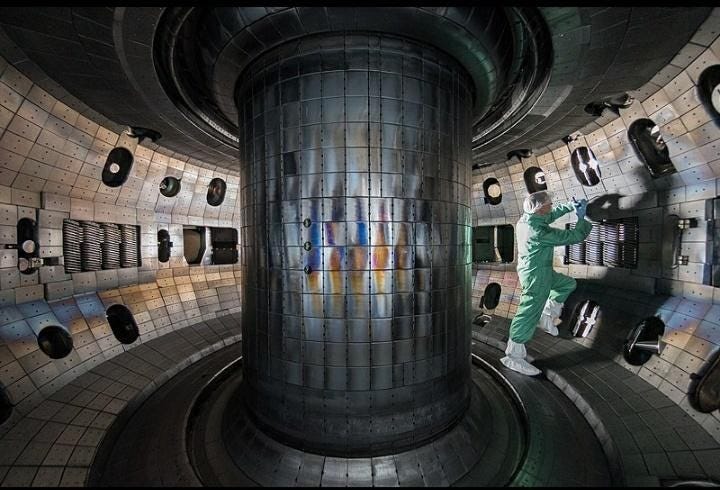The Future of Energy: Exploring the Concept of an "Artificial Sun"
Written on
The Fascination with the Artificial Sun
Imagine a future where humanity has not only reached the moon and Mars but has also attempted to replicate the sun right here on Earth. While this may sound like science fiction, the reality of our advancements in technology is pushing the boundaries of what's possible.
Recently, the KSTAR fusion reactor in Korea made headlines by achieving a staggering temperature of 100 million degrees Celsius for 20 seconds—significantly hotter than the sun's core temperature of about 15 million degrees Celsius. This remarkable feat highlights the ongoing global interest in projects aimed at harnessing energy similar to that produced by the sun.
As we dive into this intriguing topic, we’ll address several key questions:
- What is the concept of an artificial sun?
- Why is there a need for such technology?
- How does it function?
- What benefits does this project offer?
- What challenges do we face?
- What are the latest advancements in this field?
What Is the Artificial Sun?
To clarify, the term "artificial sun" is somewhat misleading. It does not imply the creation of another sun, but rather refers to projects designed to mimic the sun's energy production process through nuclear fusion. Essentially, scientists are working on replicating the sun’s energy source to meet our energy demands.
The sun, as we know, is the ultimate energy provider, yet only a tiny fraction of its energy reaches our planet—less than one billionth. Out of the solar energy that does arrive, around 34% is reflected back by clouds, and the Earth reflects an additional 66%. Consequently, less than 1% of the sun's total energy is available for use.

Understanding the Need for an Artificial Sun
The limited solar energy we receive prompts the question: What if we could harness the sun's energy more effectively? The idea is to utilize energy akin to that of the sun to address the growing energy demands of our planet sustainably.
The concept revolves around harnessing fusion energy, which is the process powering the sun and stars. In the extreme conditions of the sun's core, hydrogen nuclei collide and fuse into helium, releasing vast amounts of energy.
How Does Fusion Work?
In simpler terms, nuclear fusion involves the merging of two or more atomic nuclei into a heavier nucleus, releasing energy in the process. This reaction is significantly more powerful than nuclear fission, which involves splitting atomic nuclei.

Why Favor Fusion Over Fission?
Fusion is favored for several reasons:
- Higher Energy Density: Fusion reactions yield far more energy than fission.
- Cleaner Energy: Fusion produces no harmful waste products or radiation.
- Sustainability: Fusion fuels are abundant and can provide a near-limitless energy supply.
The Role of the Tokamak Reactor
Fusion reactions are primarily conducted in a type of reactor known as a "Tokamak," which was developed in the 1960s. This device uses magnetic fields to contain hot plasma—the state of matter where electrons are stripped from atoms.

How Does a Tokamak Work?
A Tokamak absorbs the energy produced from fusion as heat, which is then used to generate steam and, ultimately, electricity. The technology is designed to confine plasma in a toroidal shape using powerful magnetic fields.
Recent Developments in Fusion Technology
Despite the significant progress, challenges remain in mastering this technology, such as maintaining the necessary temperatures and pressures. Nevertheless, various international projects continue to make strides in this field.
The first video explores China's advancements in nuclear fusion, specifically their "artificial sun" project, which aims to secure sustainable energy for the future.
Another video discusses how China's fusion reactor has recently set new records, showcasing the potential of this innovative technology.
Exciting Future Ahead
Several major projects are leading the way in fusion research:
- ITER: A collaboration among countries to create the world's largest magnetic confinement experiment in France.
- EAST: An experimental reactor in China focused on superconducting tokamak technology.
- KSTAR: A South Korean project achieving high temperatures for extended periods.
The quest for harnessing nuclear fusion is ongoing, and while an "artificial sun" may remain a metaphor, the technology behind it is rapidly advancing and holds promise for a sustainable energy future.
In conclusion, while we cannot create a sun, the pursuit of fusion energy could be the key to solving the world’s energy needs, making it an exciting area to watch in the coming decades.
Quote to Reflect On
"Nuclear power will help provide the electricity that our growing economy needs without increasing emissions. This is truly an environmentally responsible source of energy." – Michael Burgess
Thank you for exploring this topic with us! If you found this article insightful, please leave feedback.